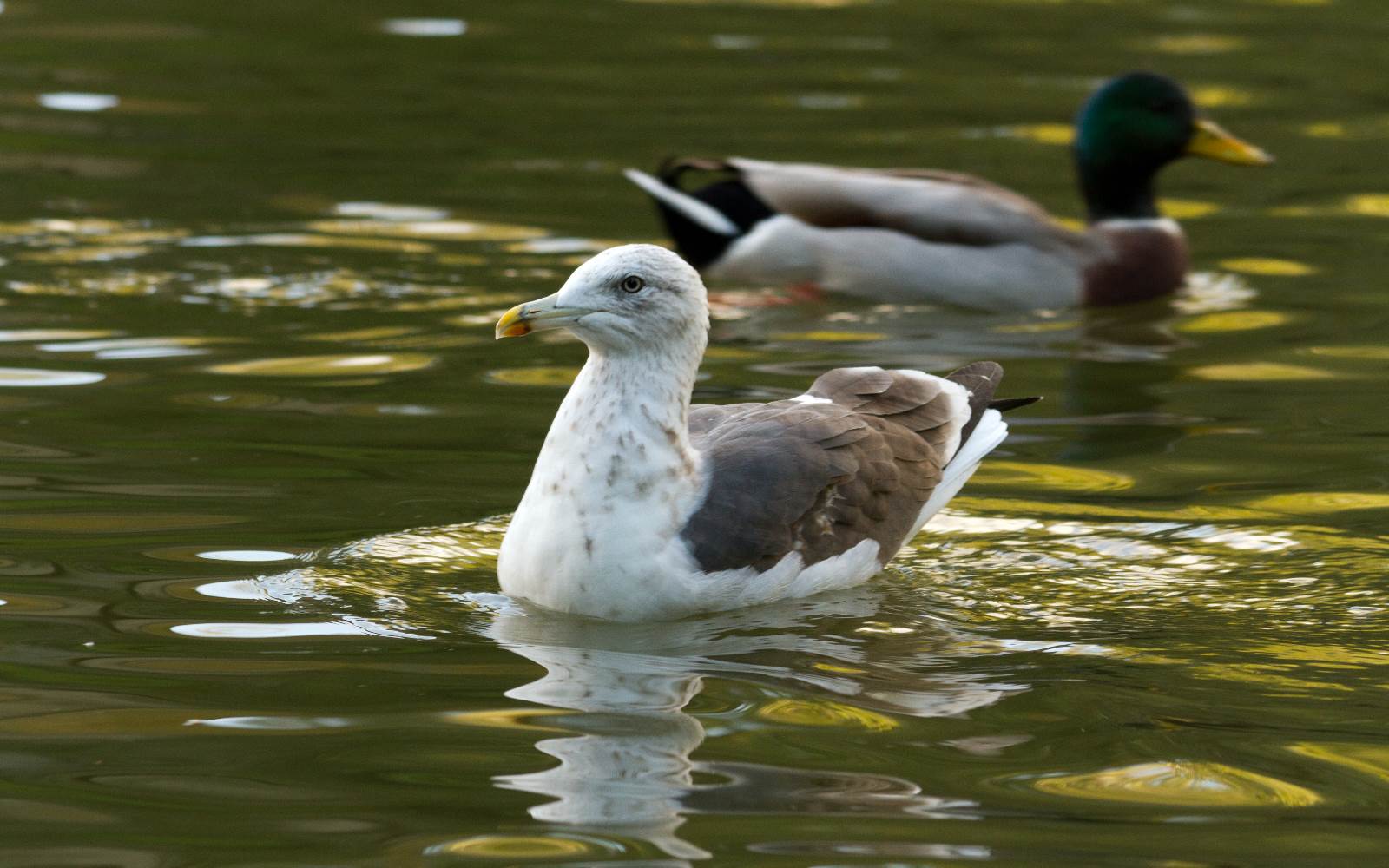Blow-up: A Story Around a Photograph

The Gulbenkian Garden is an inexhaustible source of stories about the natural world. The one I’m going to tell you began with the photographs exhibited here which was published on the Biodiversity4all platform. The photo was taken by M.T.F. Oliveira on 16 November 2019, and shows a black-backed gull (Larus fuscus) at the edge of one of the Garden tanks, recycling the corpse of a domestic pigeon that it must have taken out of the water.



This is an interesting finding and reveals this gull’s opportunistic behaviour seeking available organic matter to feed on.
However, I decided to further examine the photograph and for that reason, I entitled this text inspired by Michelangelo Antonioni’s masterpiece, which won the Palme d’Or in the 1967 edition of the Cannes Film Festival. Thomas, the film’s main character, is a photographer who solves a possible crime through successive enlargements of photographs he took in a park. My procedure was more prosaic, but it was also based on enlargements of the photo captured by M.T.F. Oliveira.
A closer look reveals the presence of a metal ring on the gull’s right leg and a plastic ring on the left one. The first one tells us that the bird was ringed somewhere, following the procedures of the scientific ringing of birds, an activity that the Gulbenkian Foundation Educational Program has been offering to visitors since 2013. But it was the ring placed on the left leg that arouses greater interest because it meant that that gull was ringed as part of a specific project. Where, when and why the black-backed gull was ringed, were the questions I raised and wanted to find the answers to.
Using the alphanumeric code inscribed on the ring (10S:C), I did some research and found the project’s geographical origin and a contact for more information. After a few days waiting, I got a reply sent from a friendly and helpful Iain Livingstone, which allowed me to build this story.
Where it originated
The black-backed gull you see in the photo was ringed in its nest as a juvenile on 20 June 2017 in the town of Greenock, which lies on the south bank of the Clyde River in Central Scotland, 40km north-west of Glasgow. The nest was located on the roofs of the local police station building and since 1976 a group of volunteers from the British Trust for Ornithology , coordinated by Hayley Douglas, has been ringing black-backed gulls. This is remarkable and shows a very positive and constructive attitude towards wild birds.
The project’s rationale
The project’s promoters wanted to know where the black-backed gulls from that region migrated to. These gulls have increased in several areas but in the UK and more specifically in this region of Scotland, the nesting population has decreased. For some decades, the volunteers only used conventional rings but nevertheless it was still possible to verify that these Scottish birds, in their first 2-3 years of life, migrated during the winter to the Iberian Peninsula and Northwest Africa. In 2012, they were authorized to use plastic rings with alphanumeric codes that were easier to identify, and the sighting information rate increased from 4% to about 20%.
Travel logs
This gull has the following inscription on its plastic ring: “10S:C”. The “10S” is the bird’s ID, so we can call it “10S”; “:C” is the project’s code.
According to sighting records reported to us by the study’s coordinator, the “10S” gull was first spotted on Mira beach (Mira Municipality, District of Coimbra) in November 2018. On 16 November 2019, it was spotted again but this time in the Gulbenkian Garden, on the day it was photographed, and then again on the 20th of the same month. In February 2020 and in January 2021 it was spotted at the same place once again.
Thus ends the story of the voyage of a bird from Scotland that was born in 2017, spends the winter in our latitudes and regularly visits our Garden!
However, unlike other stories, this one ends with a question: will “10S” return to this Lisbon oasis during the next cold season? We shall have to wait and see…
Text from João E. Rabaça